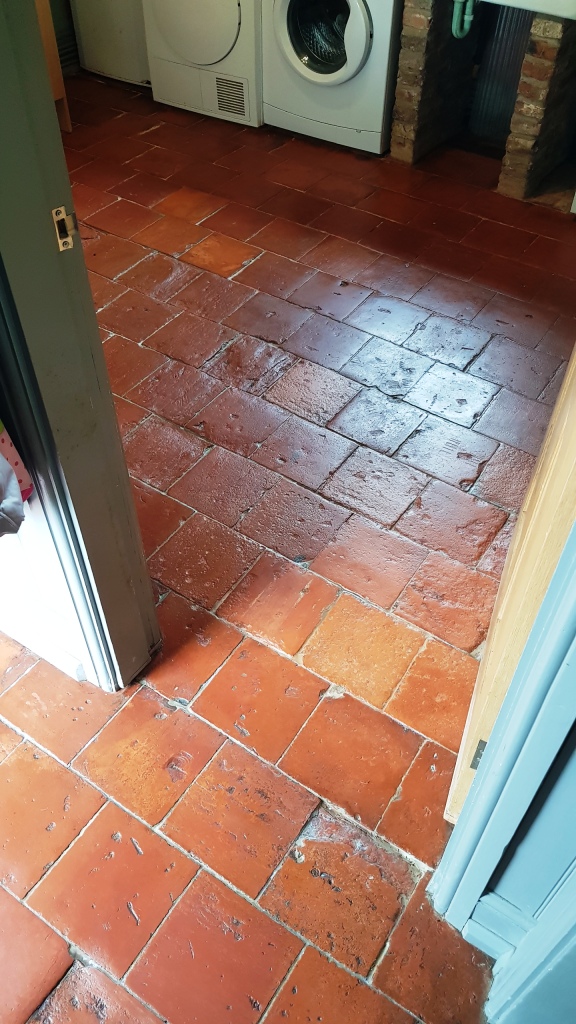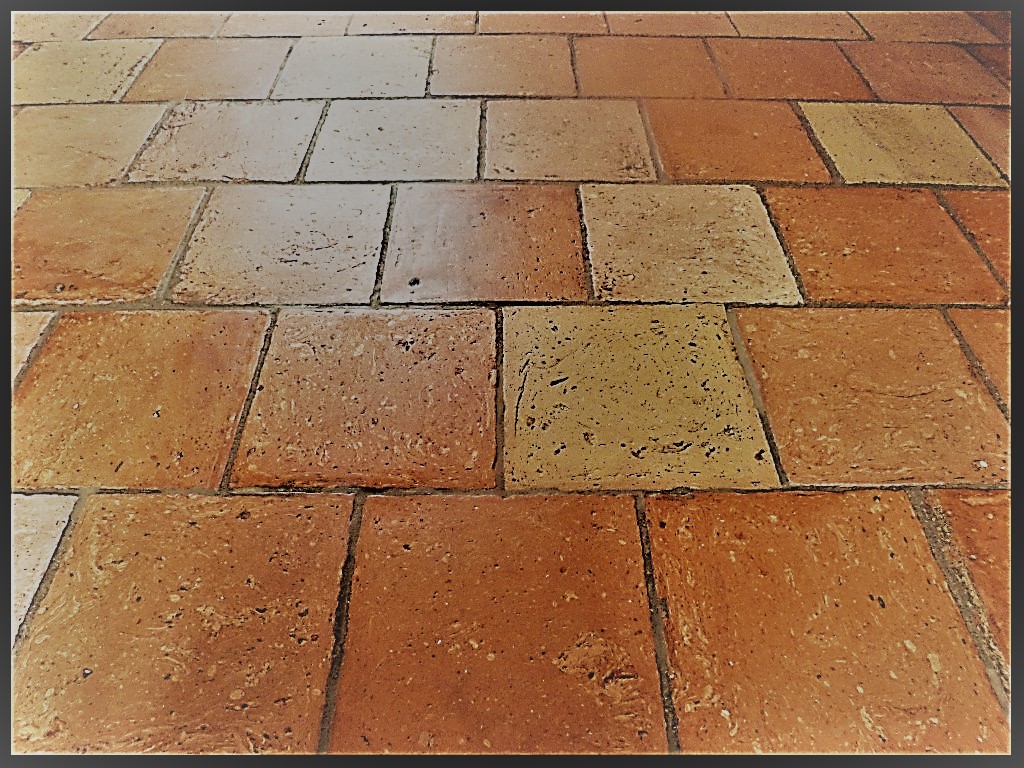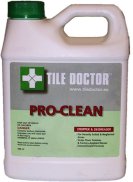Pamment tiles are similar to Terracotta tiles made from clay, they are particularly popular in Norfolk and Suffolk counties of England where they are still made locally today.
The photographs below are taken from a number of Pamment tile cleaning jobs published by Tile Doctor, more details from those jobs can be seen on the Pamment Posts menu on this page.
Pamment Tile Maintenance
| Deep Cleaning and Sealing Pamment Hallway Tiles in Lingfield | |
|---|---|
 |
 |
| Bitumen Stained Pamment Floor Restored near Barnsley | |
 |
 |
| Neglected Pamment Tiled Floor Fully Restored in Wymondham | |
 |
 |
 |
 |
 |
 |
 |
 |
The one big downside to a Pamment tile is the fact that it has no glaze on the surface and can pick up and store muck and dirt very quickly. If you have ever owned a Pamment or Terracotta floor before you will be able to relate to this problem.
The answer of course is to seal them, but which sealants do you use as there are so many of them on the market, the best answer is to get some advice and as any tiler worth his salt will tell you Terracotta tiles are the most problematic to seal . Wax sealants tend not to soak all the way into the tile and some residue is left on the surface which overtime with traffic wear, tends to discolour to a darker shade whilst leaving the outside edges clean where they are not walked on that much.
The best sealant I have found to overcome this problem are water-based sealers. Water based sealers are much thinner than solvent or acrylic sealers and therefore soak much deeper into the tile. The only drawback if there is one is the fact that you require many coats of sealant before saturation is achieved, Whilst doing a clean and reseal on a Mexican Terracotta floor, which tends to be the most porous of all terra-cottas, on one installation we had to use 9 coats of Seal & Go sealer before it was fully sealed.
| Use Tile Doctor Pro-Clean Tile & Grout cleaner to effectively clean tiles, highly effective against Wax Sealers, Grease, Grime and general dirt build up (Mix with 3 parts warm water). This product is especially formulated to strip off synthetic and acrylic waxes and floor finishes.
PLEASE NOTE: It’s important to remove any cleaning solution effectively using a wet-dry Vac machine before sealing; any cleaning solution left on the surface may impact the performance of the sealer. |
 |
 |
Always neutralise floor with clean water prior to sealing and remove with a wet-dry Vac machine, allow to dry for 30 minutes or more. Apply Tile Doctor Seal & Go sealer with a paintpad applicator and tray. Spanish or Mexican terracotta tiles may require up to 8 or 9 coats of sealant, always allow to dry before applying the next coat. Use a water test to achieve full cure sealability (F.C.S.).
TIP: If the floor goes sticky after the last coat of sealer it generally means to much sealer has been used and a rinse of Tile Doctor Pro-Clean tile and grout cleaner on the affected areas using 1 to 6 part solution will remedy the problem without affecting the rest of the sealer as long as you rinse it off with water afterwards.
NOTE: Most sealers break down after 2-3 years (depending on usage and cleaning products used) so for regular cleaning use a sealer friendly cleaning product such as Neutral Tile Cleaner which has been especially formulated for the regular cleaning of Sealed Stone and Tile surfaces keeping them fresh with a pleasant mint scent.
EFFLORESCENCE
A solution of Concentrated Acid mixed 1 to 3 with water will ease the problem temporarily, but you will find in most cases the efflorescence will repeat itself until all the salt crystals have evaporated on the surface, and this can take months in some instances.
Pamment Problem? Click here to Ask the Tile Doctor for his advice.
